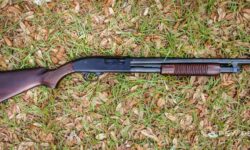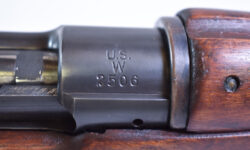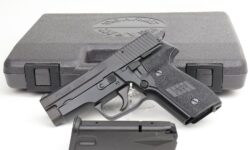HOW TO MAKE BALLISTIC GEL?
Ballistic gelatine is a trial medium intended in animal muscle tissue to estimate the performance of gunshot wounds. Typically, it is a water-based liquid of gelatin powder. It precisely matches the thickness and viscosity of living organisms’ muscle tissue and serves as a standardized medium for examining the final efficiency of gun bullets.
Although, it doesn’t simulate the compressive strength of body structures and muscle tissues. It works well, providing tissue imitation and coordination for most ballistic tests; its value for low-speed projectiles may nevertheless be restricted.
In most cases, it refers to a piece of solid gelatin used to research the ultimate efficiency of projectiles, such as piercing, expansion, stretched cavities, and persistent cavities formed by bullets striking a non-solid medium.
To put it another way, that’s what you’d use to compare 10mm with 9mm. There are also specific gel materials available for the particular reason of ballistic gels, like clear ballistic gelatin.
Composition of ballistic gel
Synthetic and natural gelatin are the two main types of ballistic gelatin. Synthetic ballistic gelatin is created with artificial ingredients, which is how the transparent material is generally obtained. Then there’s a natural ballistic gel, that is DUH. It is built from natural components that are either plant-based or animal-based.
The ballistic gel is made of gelatin. What exactly is gelatin? Gelatine is hydrolyzed collagen indicating that all fluid has been eliminated by the exposure of collagen to electricity, separating water from other components. Collagen is a protein composed of various amino acids and is present in most of the body’s connective tissues. It consists of amino acids that link to fibrous helical threads within the connective tissues of the body. It’s rough, but it’s also adaptable.
Why Is Ballistic Gelatin a Better Testing Medium?
Ballistic gelatin is utilized as a testing media for projectiles as it has two essential features. It has elasticity and the ability to regulate the thickness of the testing media by either manufacturing the gelatin oneself or buying gel blocks with the correct density. Indeed, the human body is not made up of uniform tissue. On the other hand, gelatin is a homogeneous substance with consistent composition, thickness, stiffness, and so forth.
Gelatin can be used to achieve the standard consistency of such tissues. Experts who tested this product concluded that ballistic gelatine is now the test criteria rather than some other substance years earlier. However, it has been discovered that there is a link between efficiency in gelatin and efficiency in police and citizen-defense shootings throughout time.
Shooting Gelatin
Firstly, we’ll fire the gelatin block. The gel block expands when the bullet is hit and entered. With super fast photography, this is easy to observe. The gel creates cracks or holes resulting from the collision, so the affected region is frequently in the form of a football.
The projectile stops typically in a block of 18-inch, only if the bullet is deeper or non-expanded. The gel bock instantly compresses to its original outer dimensions upon hitting. We then observe and analyze the findings of all dimensional parameters for damage inside the block.
The block damage is simpler to photograph if we apply dye to give contrast. So we take a tube and a syringe to put color into the gelatin block route to create the required contrast. It makes a significant contribution to seeing the wound and taking pictures of a hole that has been built. We next take photographs of the outcomes to document the performance.
Steps for making ballistic gel
We need to collect the supplies before we can begin making ballistic gelatin. A few devices are required, notably a refrigerator and a stove. You want to get a 10% gel mixture to test your bullets properly. It requires a proper balance of water per ounce of gelatine.
Eight ounces of gelatin need to be accurate with ten glasses of water. To make things easier, use 8 ounces of water for every 1 ounce of gelatin powder. It makes things a lot easier but does not result in a 10% mixture, only a close match.
- Step 1:
Take out your Knox Gelatin, a bowl, a teaspoon, and some water. Fill your pan half with Knox gelatin, then half with water. If you pour the water first, then add the powder, you will have more clumps. You’ll need to begin adding the gelatin once you’ve added the water.
- Step 2:
Begin by breaking up the most prominent pieces of the water-gelatin mixture with your spoon. When the large pieces have been broken up, it’s ready to go in hands first. Your hands are far more suitable for splitting up the smaller bits. You need to remove as many clumps as possible. The mix will be more precise if there are fewer clumps. It is essential to stop adding air to the solution. The mixture should not be fluffed.
- Step 3:
It is the simplest but also the most difficult. Place it in the fridge. Not in the freezer! It’s pretty ineffective if it becomes too cold. Allow it to rest for two hours. Don’t mess with the mixture. Let it there. It is called blossoming.
- Step 4:
After two hours, It’s time to start taking the mixture and the pan out of the stove. Grab your second pot, which is much larger, and add some water. Place this pot on the fire and begin heating the water. Keep the flame at medium.
- Step 5:
Put a small pan and allow the gelatin to start to melt. You must carefully swirl it while it melts. By all means, keep it from boiling. Try not to hurry up the stove by switching it on. Use your thermometer to measure the temperature regularly. Maintain the temperature under 107 degrees F.
- Step 6:
Proceed to mix and prepare your mold after the gelatin has melted. Go on and switch the stove off and let it cool down. Then use cooking spray to coat the interior of the box. Then I put the molten mix in the box gradually and properly.
- Step 7:
Afterward, return the gelatin to the refrigerator. Different individuals recommend different times for the gelatin to fully condense and solidify. The most widely recognized time is 36 hours in the refrigerator. After 36 hours, it is ready to go.
- Finally:
The excellent thing regarding them is that they can be melted and stored in the refrigerator and reused again. The block will gradually weaken and expire, although you can still reuse it a few times. Never clean it with water. It will result in the addition of water to the mix. Wipe these blocks off with baby wipes. If you leave them outside, they will melt. So, keep them in cold temperature.
Summary
Ballistic gelatine is a test medium for the efficacy of bullet wounds in animal muscle tissue. It corresponds to the thickness and viscosity of the muscular tissue of living creatures and is used for the ultimate efficiency test for gun bullets as a standardized medium. It does not, however, imitate the compressive strength of bodily structures or muscle tissues. [sc name=”faq2questions” q1=”Composition of ballistic gel” a1=”The ballistic gel is made of gelatin. What exactly is gelatin? Gelatine is hydrolyzed …” q2=”Steps for making ballistic gel” a2=”Step 1: Take out your Knox Gelatin, a bowl, a teaspoon …” ][/sc]


